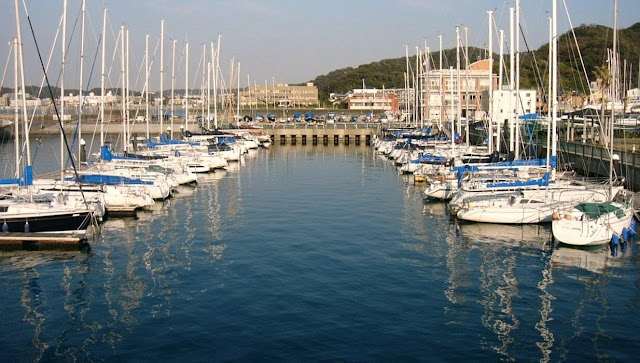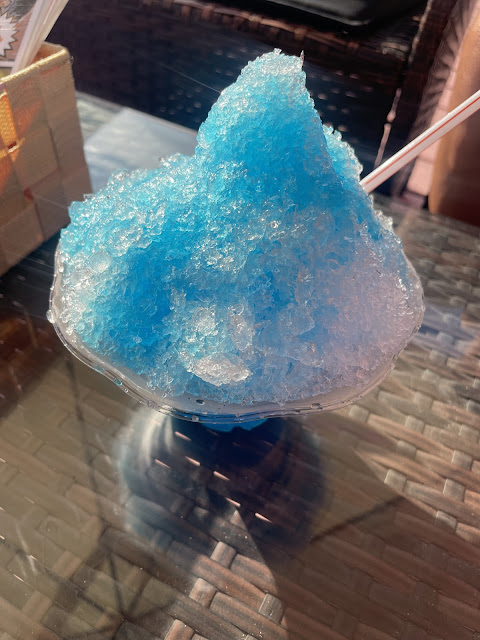Now that my daughter is five, we have been to many play areas around Yokohama that I would like to share with you today as a foreigner! Although play areas and quite similar that aren’t created equally and have their advantages and disadvantages. Let’s take a closer look, and just a reminder that this is my own opinion and not being sponsored in any way. Plus, all photos are stock images and not photos from the actual play area in order to comply with copyrights. Therefore, please visit the homepage of each individual play area for further information.
1. BORNELUND (KID-O-KID)
Bornelund, or Kid-O-Kid, is my go-to play area. My daughter has been visiting since she was one. Bornelund can be found in shopping malls across Japan, making it very accessible. The concept focuses on organized, educational play, with age-specific zones for children roughly 9 months to 9 years old.
I love how well-organized it is, with stimulating, high-quality toys, such as ball pits, trampolines, climbing structures, pretend play zones, and building corners. The place is manageable in size and feels old-school, being the most educational out of the bunch and organic, without distracting VR or device games. If your child loves a toy, you can often buy it in the attached store. The staff are friendly and keep the space very clean.
The entry procedure is a bit tricky, as you need to scan a QR code outside the store, input your info online, and use the reservation within 30 minutes. Adult tickets are cheap, and you can switch guardians. However, there are no bathrooms or eating areas inside, so plan ahead.
Accessibility & Unique Features:
2. HAPIPI LAND
Hapipi Land is the most stimulating play area on my list, with loud, happy music and super colorful lights. I try not to go too often because it can be very overstimulating. Tickets can be reserved online for express entry, and free lockers are available for shoes and belongings.
The space is large, with the active zone taking up most of the floor. There’s also a small pretend play area and a sit-down toy corner, though the zones feel a bit mixed with sit-down toys being scattered among running areas, which makes it slightly hectic. I love the mix of traditional active toys and futuristic interactive options, like a touchscreen. My daughter loved the running track and maze area, though we were cautious about the zip line. Hapipi Land can entertain both younger and older kids.
There’s a bathroom inside, but no eating area, so you’ll need to plan accordingly. The location is very convenient, just a short walk from Yokohama Station, and the price is reasonable.
Accessibility & Unique Features:
3. TOYLO PARK
Toylo Park, in Kawasaki’s Grand Tree Mall Musashi Kosugi, is the most digital-heavy play area on my list. Its concept is “interactive digital play,” blending physical activity with augmented reality and technology to create immersive, educational experiences. Children’s actions are tracked digitally via a bracelet linked to an app.Sign-up is a bit complicated. You need a membership, the app, and a bracelet, but the staff are friendly and help explain everything. The facility is small and dark, with most activities projected onto the walls. My four-year-old at the time struggled with some of the games, though she loved the sandbox with projections and dinosaur figures. I loved the drawing area, where scanned drawings come to life in the projections. The ball pool was also fun, and the app lets you look back at your child’s creations.
There are no bathrooms or eating areas inside. Toylo Park may be better suited for older kids (7+), so we’ll try again when my kids are older.
Accessibility & Unique Features:
4. The KIDS IN NORTHPORT MALL
The Kids play area occupies an entire floor of the mall and is huge! Entrance is easy and you can make a reservation and buy tickets online for quick access. Lockers are available for a small fee.
There are so many fun areas, such as trampolines with foam blocks, a large Lego area, scooter go-karts, free arcade games, and riding toys. There’s even an eating space where you can bring your own food! My daughter went absolutely crazy here; the only thing missing is a ball pool. The areas have clear instructions on how to take turns, and people respect them. It got very crowded, which shows how popular and enjoyable it is.
There aren’t bathrooms inside, so plan accordingly. This is my top pick if you have a young and older child who both need to be entertained.
Accessibility & Unique Features:
Entire floor dedicated to play, perfect for a full-day visit.
Variety of activities for all ages, including free arcade and riding toys
5. FANTASY KIDS RESORT
Fantasy Kids Resort is the priciest on my list because adult tickets cost the same as child tickets, plus a membership fee. Arcade and crane games, and some event areas, require extra money. Despite feeling “money-grabby,” the resort is huge, very stimulating, and perfect for a full-day adventure.
Its concept is all-in-one indoor amusement—combining physical play, imaginative zones, and interactive digital games. Attractions include enormous pretend play houses, a large costume/dress-up area, massive inflatable slides and bouncy houses, trampolines with VR machines, a Lego building area, and a train track zone. The restrooms and a restaurant/eating space make it convenient. Reservations and ticket packages can be bought online, though check-in is a bit complicated.
Accessibility & Unique Features:
Ideal for full-day visits.
Combines physical, imaginative, and digital play.
Indoor toilets and eating area available.





























